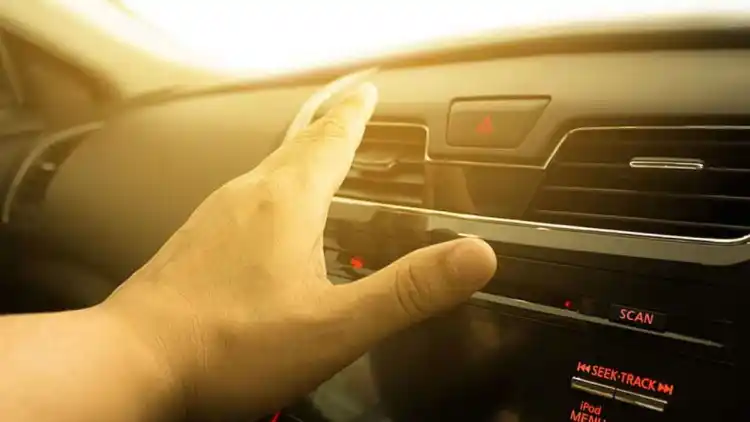- Why Buy Used Agricultural Vehicles?
- Key Choices Before You Buy
- Essential Used Farm Vehicle Checklist
- Keeping Your Used Vehicle Running
- FAQ
When it comes to supporting a productive farm or agricultural operation, having reliable equipment is a must. However, buying new tractors or machinery can be costly. That's where used agricultural vehicles shine. They offer a perfect balance of affordability and functionality. In this guide, we’ll walk you through everything you need to know to make a wise purchase that meets your farming needs.

Why Buy Used Agricultural Vehicles?
The decision to buy used agricultural vehicles isn’t just about saving money—it’s about making the most out of your budget without sacrificing quality or performance. Here are some reasons why this could be a smart move:
Lower price: You can save a significant amount compared to buying brand-new machinery. A well-maintained used tractor or harvester often comes at a fraction of the cost.
Proven performance: Many used agricultural vehicles are tried and tested models, meaning you avoid the potential flaws of brand-new designs.
Wide selection: The used market often provides a variety of models and configurations, giving you more flexibility to find exactly what you need for your specific tasks.

Key Choices Before You Buy
Selecting the right used agricultural vehicle is more than just picking the first affordable option. You need to evaluate several important factors to ensure the machine suits your daily farming tasks. Here’s what to consider:
Identify your needs:
Will the machine be used primarily for tilling, planting, cutting, or transporting goods?
Consider whether you need specialized vehicles like combines, balers, or sprayers.
Evaluate size and power requirements:
Look at the engine power rating (measured in HP) to ensure it can handle hard soil, heavy loads, or large implements.
Ensure the vehicle won't be too large or too small for the fields you are working on.
Attachment compatibility:
Will the tractor or vehicle easily connect to commonly used attachments like plows, mowers, or seed drills?
Double-check for compatibility with specific implements.
Consider your terrain:
Hilly or uneven land will require vehicles with strong brakes and enhanced stability.
For flat terrains, look for speed and durability over excessive power.
Budgeting for extras:
Many used vehicles may need additional accessories or attachments, so factor that into your budgeting process.

Essential Used Farm Vehicle Checklist
Before signing any deal on a used agricultural vehicle, thorough inspection is critical. Here’s a detailed checklist to keep you informed while evaluating the machinery:
Examine body structure: Look for obvious signs of rust, deep dents, or poorly done repairs. These can indicate a lack of care by the previous owner.
Inspect the engine and fluids:
Check for oil or coolant leaks.
Inspect the oil color; dark or gritty oil could hint at overdue maintenance.
Start the vehicle and listen for unusual noises from the engine.
Review gears and brake system:
Test the gear transmission to ensure smooth shifts.
Check the brake responsiveness to guarantee safety.
Assess power transfer parts:
Inspect components like the power take-off (PTO) shaft or hydraulic system for wear and tear.
Check usage hours: The number of hours the machine has been used is similar to car mileage. Fewer hours typically mean less wear, but also pay attention to maintenance records.
Keeping Your Used Vehicle Running
Purchasing a used agricultural vehicle is just the beginning. Proper maintenance ensures that your investment continues to serve your farm effectively for years to come. Follow these guidelines:
Perform regular oil changes based on the manufacturer’s recommendations.
Store the vehicle in a covered area to protect it from rain, sun, and dust.
Conduct daily pre-use inspections to identify loose bolts, leaks, or worn-out parts.
Keep a detailed record of any repairs or replacements; this log will help identify recurring issues and improve resale value.
FAQ
Q: How many hours is too many for a used tractor?
A: The acceptable hours depend on the type and usage of the tractor. For light tasks, tractors with around 3,000 to 5,000 operating hours may still have a lot of life left. Always prioritize overall condition and maintenance history over just hour counts.
Q: Can I insure a used agricultural vehicle?
A: Yes, insurance for used tractors and farm equipment is available. Coverage often includes liability, damage from accidents, theft, or natural disasters. Compare terms from multiple providers to find a plan that suits your needs.
Q: What are common repairs needed for older farm machines?
A: Wear-and-tear parts often require attention, such as belts, hydraulic systems, and electrical components. Check with the seller about recent repairs and always set aside a budget for potential fixes post-purchase.
Read More:
Yellow Car: Why They Stand Out and What Owners Should Know













